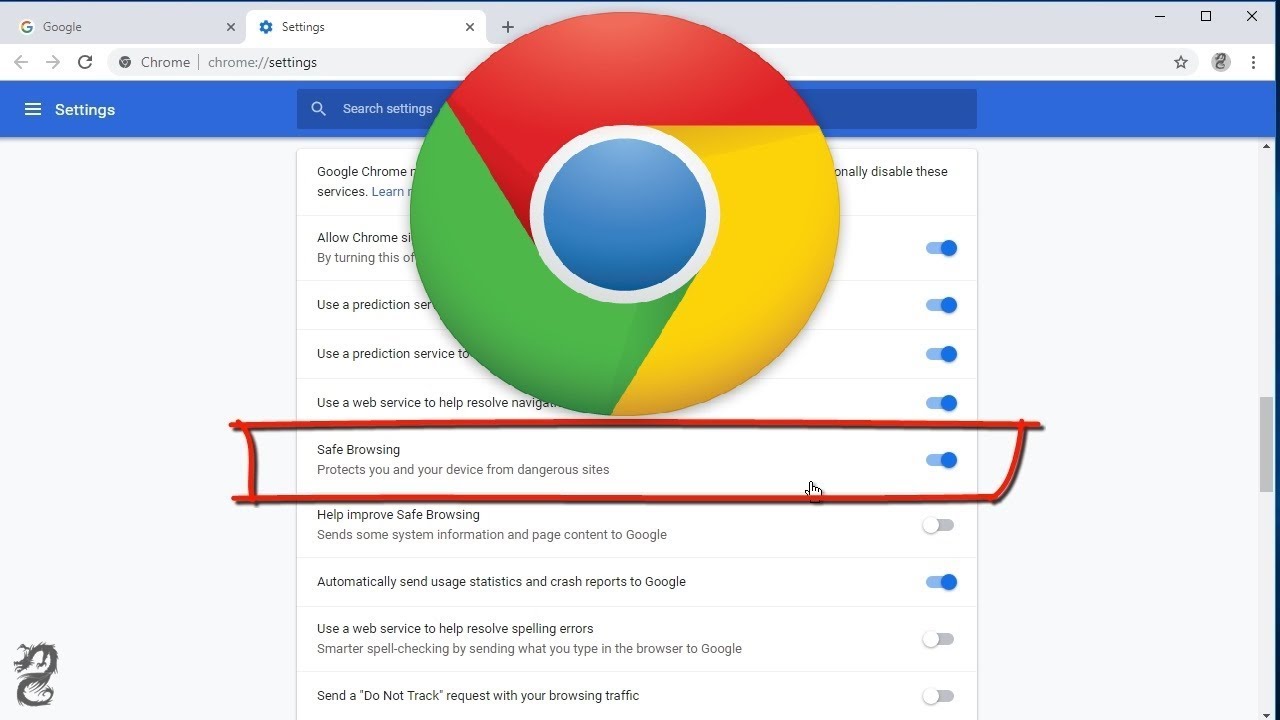Introduction
When it comes to browsing the web, Google Chrome stands out as one of the most popular and widely used web browsers. Its robust security features provide users with a safe and secure online experience, protecting them from various online threats such as malware, phishing attempts, and harmful websites. However, there are instances when users may need to temporarily disable Chrome's security measures for specific reasons, such as accessing a website that is being flagged incorrectly or troubleshooting connectivity issues.
In this article, we will delve into the intricacies of Chrome's security settings and provide a comprehensive guide on how to turn off Chrome security. Whether you are a casual user or a tech-savvy individual seeking to navigate through Chrome's advanced settings, this guide will equip you with the knowledge and steps needed to adjust Chrome's security settings according to your specific requirements.
So, if you've ever found yourself in a situation where Chrome's security measures have hindered your browsing experience or access to certain websites, fret not. By the end of this guide, you will have a clear understanding of how to navigate Chrome's security settings and make informed decisions about when and how to disable them temporarily. Let's embark on this journey to unravel the intricacies of Chrome's security features and learn how to wield control over them effectively.
Understanding Chrome Security
Google Chrome is renowned for its robust security features, which are designed to safeguard users' online activities and protect them from various cyber threats. The browser employs a multi-layered approach to security, encompassing features such as Safe Browsing, sandboxing, automatic updates, and advanced encryption protocols.
Safe Browsing
One of the key components of Chrome's security arsenal is Safe Browsing. This feature proactively identifies and warns users about potentially dangerous websites or downloads. It leverages a constantly updated database of known malicious sites and uses this information to display warnings when users attempt to access such sites. Safe Browsing also extends its protection to downloads, alerting users if a file is known to be malicious.
Sandboxing
Chrome utilizes a technique called sandboxing to isolate web page processes from the rest of the system. Each tab in the browser operates within its own sandbox, preventing malicious code from affecting the entire browser or the underlying operating system. This approach enhances security by containing any potential threats within a confined environment.
Automatic Updates
Chrome's automatic update mechanism ensures that users are always running the latest version of the browser. This is crucial for security, as it allows Google to promptly patch any discovered vulnerabilities and distribute these fixes to users. By keeping the browser updated, users benefit from the latest security enhancements and bug fixes, thereby reducing the risk of exploitation by cybercriminals.
Encryption
Chrome employs robust encryption protocols to secure users' data during transmission. This is particularly important when users engage in online transactions or transmit sensitive information. The browser uses industry-standard encryption methods to establish secure connections with websites, thereby safeguarding users' privacy and protecting them from eavesdropping and data interception.
Privacy Settings
In addition to its security features, Chrome offers a range of privacy settings that allow users to control how their data is collected and used. These settings enable users to manage cookies, control site permissions, and customize their browsing experience to align with their privacy preferences.
Understanding Chrome's security features is essential for users who wish to make informed decisions about their online safety. While these features are designed to provide robust protection, there are scenarios where users may need to temporarily disable certain security measures to address specific issues or access certain websites. In the next section, we will explore the steps to turn off Chrome security, empowering users to navigate these settings effectively.
Steps to Turn Off Chrome Security
Disabling Chrome's security measures should be approached with caution, as it temporarily exposes users to potential online threats. However, there are legitimate reasons for needing to turn off Chrome's security, such as troubleshooting website access issues or addressing false positive warnings. Here's a comprehensive guide on how to navigate Chrome's settings and temporarily disable its security features:
1. Accessing Chrome Settings
- Launch Google Chrome on your computer or device.
- Click on the three-dot menu icon located in the top-right corner of the browser window.
- From the dropdown menu, select "Settings" to access Chrome's configuration options.
2. Navigating to Security Settings
- Within the Settings menu, scroll down and click on "Privacy and security" in the left-hand navigation pane.
- Under the "Privacy and security" section, you will find various security-related settings that can be customized according to your preferences.
3. Adjusting Site Settings
- To manage security settings for individual websites, click on "Site settings."
- Here, you can modify permissions for cookies, pop-ups, and other site-specific settings. However, this does not directly disable Chrome's overall security features.
4. Managing Safe Browsing
- To temporarily turn off Safe Browsing, return to the "Privacy and security" section within Chrome's settings.
- Click on "Security" to access Safe Browsing settings.
- You may find an option to disable Safe Browsing temporarily. Keep in mind that this feature provides crucial protection against malicious websites and downloads, so exercise caution when disabling it.
5. Customizing Advanced Security Settings
- For more advanced security settings, navigate to the "Advanced" section within Chrome's settings.
- Here, you can explore additional security and privacy options, including SSL/TLS certificate management and content settings.
6. Using Incognito Mode
- If your intention is to browse without certain security features, consider using Chrome's Incognito mode. This mode does not store browsing history, cookies, or site data after the session ends, providing a degree of privacy and security for sensitive browsing activities.
7. Re-enabling Security Features
- After completing your tasks that necessitated the temporary disabling of Chrome's security features, it's crucial to re-enable them promptly to restore the browser's protective measures.
By following these steps, users can gain a better understanding of Chrome's security settings and make informed decisions about when and how to adjust them. It's important to exercise caution when turning off security features and to do so only when necessary, ensuring a safe and secure browsing experience.
These steps empower users to navigate Chrome's security settings effectively, enabling them to address specific issues while maintaining a proactive approach to online security.
Conclusion
In conclusion, Google Chrome's robust security features play a pivotal role in safeguarding users' online experiences, protecting them from a myriad of cyber threats. The multi-layered security approach, encompassing Safe Browsing, sandboxing, automatic updates, and advanced encryption, underscores Chrome's commitment to providing a secure browsing environment.
While the necessity to turn off Chrome's security features may arise in certain situations, it's imperative for users to approach this with caution and a clear understanding of the potential risks involved. By following the comprehensive guide outlined in this article, users can navigate Chrome's settings effectively and make informed decisions about when and how to adjust its security measures.
It's important to emphasize that the temporary disabling of Chrome's security features should only be done when absolutely necessary, such as troubleshooting specific website access issues or addressing false positive warnings. Users should exercise caution and promptly re-enable these security features once the specific tasks requiring their deactivation have been completed.
By empowering users with the knowledge and steps needed to manage Chrome's security settings, this guide aims to promote a proactive approach to online security. It's crucial for users to stay informed about the intricacies of Chrome's security features and to make conscious decisions when adjusting these settings.
Ultimately, the goal is to strike a balance between leveraging Chrome's advanced security capabilities and addressing specific browsing requirements effectively. By doing so, users can enjoy a safe and secure browsing experience while having the flexibility to manage Chrome's security settings according to their individual needs.
As technology continues to evolve, Chrome's security features will undoubtedly undergo enhancements and refinements to adapt to emerging cyber threats. Therefore, staying informed about these developments and understanding how to navigate Chrome's security settings effectively will be instrumental in ensuring a secure and seamless browsing experience for users.
In essence, the ability to turn off Chrome's security features, when necessary, underscores the flexibility and customization options available to users, while also highlighting the importance of exercising caution and informed decision-making in the realm of online security.

























